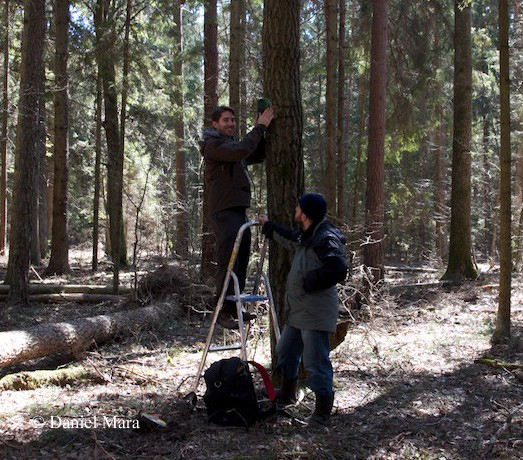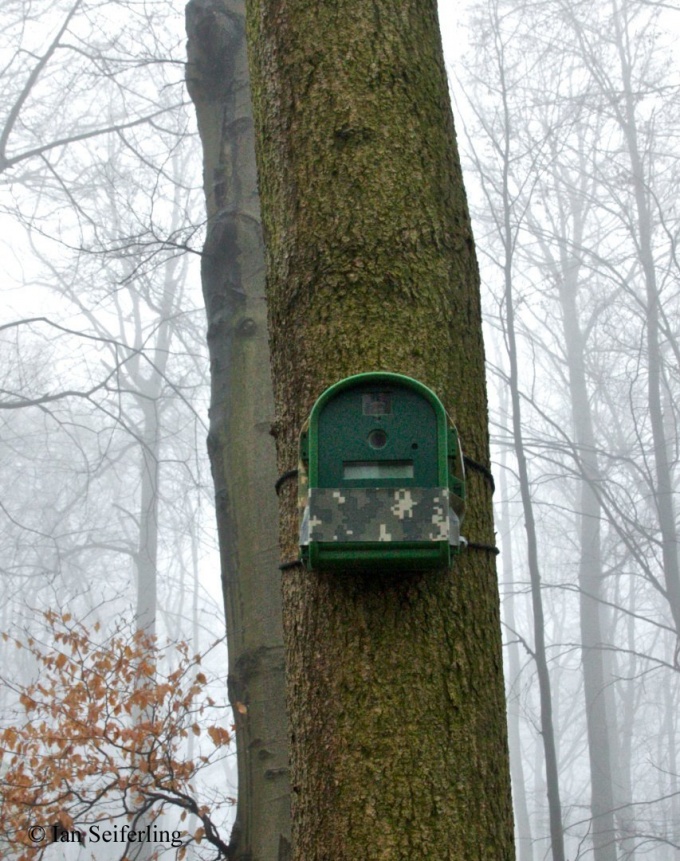As of April 19, 2012 all of the exploratory plots in five of the six study regions (Germany, Poland, Romania, Italy and Spain) were equipped with a time-lapse digital camera. The plots in Finland will be without cameras until the 2013 growing season.
The objective, that these camer as and the data they collect will play a role in, is to quantify the spatial and temporal dynamics of forest structures at the plot level. The focal purpose of the time-lapse cameras is to capture phenological progression and events (e.g., plant growth and senescence) throughout the growing season. Subsequent image processing and analysis will quantify and measure these events, producing a time-series of vegetation production at a very high temporal and spatial resolution. Since the timing of phenological events is, traditionally, very difficult to obtain at the level of forest plots, the time-lapse cameras and digital analysis fill this gap.
as and the data they collect will play a role in, is to quantify the spatial and temporal dynamics of forest structures at the plot level. The focal purpose of the time-lapse cameras is to capture phenological progression and events (e.g., plant growth and senescence) throughout the growing season. Subsequent image processing and analysis will quantify and measure these events, producing a time-series of vegetation production at a very high temporal and spatial resolution. Since the timing of phenological events is, traditionally, very difficult to obtain at the level of forest plots, the time-lapse cameras and digital analysis fill this gap.
The cameras themselves are commercial grade digital cameras that are housed in a weatherproof molding. They have been attached, 1.5 – 2.5 meters off the ground, to the trunk of large (DBH > 10 cm) healthy trees typically located about 5 meters from the southern border of each plot. They aim (magnetic) north and are angled and placed such that they capture the “representativeness” of each plot in terms of their diversity level.
cameras themselves are commercial grade digital cameras that are housed in a weatherproof molding. They have been attached, 1.5 – 2.5 meters off the ground, to the trunk of large (DBH > 10 cm) healthy trees typically located about 5 meters from the southern border of each plot. They aim (magnetic) north and are angled and placed such that they capture the “representativeness” of each plot in terms of their diversity level.
These cameras will record, in each plot, images every 3 hours during daylight from now until the end of the growing season (late October to early November, 2012). Using the resulting chronology of images, regions of interest (ROI) will be selected at the computer lab following the field season. There will be at least four ROI: i) the whole image, ii) one overstorey canopy layer, iii) one understorey canopy layer, and iv) one non-vegetated ground layer. Various image greenness and texture indices will then be calculated for each ROI to provide proxy measures of primary production, patterns of light interception/reflection, and litterfall decomposition. Variance (reciprocal) values of these metrics can also be used to track temporal stability of these processes and descriptors.
T.II.5 “Spatio-temporal forest structural complexity” is a project led by Dr. Raphael Proulx (Université du Québec à Trois-Rivières, Canada), Ian Seiferling (PhD candidate, Université du Québec à Trois-Rivières, Canada) and Prof. Dr. Christian Wirth (Universität Leipzig).
By Ian Seiferling, Université du Québec à Trois-Rivières, Canada.


